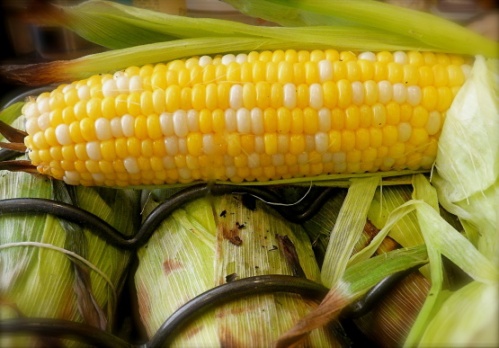
One of summer’s greatest pleasures is enjoying a fresh ear of sweet corn at a backyard barbecue. We eagerly await the corn harvest, and now it’s here! Fresh sweet corn is available in most communities throughout the month of August.
Corn is a nutrient-rich vegetable. One ear of corn is a good source of fiber, vitamin C, folate, magnesium, and potassium. Corn is also a good source of lutein and zeaxanthin; phyto-nutrients that are linked to a reduced risk for cataracts and macular degeneration. Corn has about the same amount of calories as an apple, but with one-fourth less sugar.
To reap the full nutritional benefits of corn, cook no longer than 10 minutes in boiling water to minimize nutrient loss. While boiling is the primary way most of us prepare corn, grilling is a popular and tasty alternative. Other ways to enjoy this nutritious vegetable include mixing it into pasta dishes, corn bread, soups and/or salads.
For a different taste, try seasoning corn with lime juice instead of butter. Or combine cooked corn kernels with chopped scallions, red pepper, hot pepper sauce and lime juice as a quick salsa for meat, poultry or fish.
So what are you waiting for? In a few weeks corn season will be over. Make plans to visit your local farmer’s market to pick up some sweet corn this weekend!
Written by: Beth Stefura M Ed, RD, LD, Family and Consumer Sciences Educator, Ohio State University Extension, Mahoning County, stefura.2@osu.edu
Reviewed by: Donna Green, Family and Consumer Sciences Educator, Ohio State University Extension, Erie County, green.308@osu.edu
Resources: Summer Corn – More Than Delicious, Web MD

 m being taken.
m being taken.
 Is there a breakroom in your office or place of work? If so, how would you describe it? Is it warm and inviting? Large? Small? Bright? Dark? Think about the food that you see on the counter tops, if any at all. Does your breakroom support people who are striving to make healthy choices? Or, like mine, is it a place full of tempting but unhealthy food that you try to avoid?
Is there a breakroom in your office or place of work? If so, how would you describe it? Is it warm and inviting? Large? Small? Bright? Dark? Think about the food that you see on the counter tops, if any at all. Does your breakroom support people who are striving to make healthy choices? Or, like mine, is it a place full of tempting but unhealthy food that you try to avoid? accessible via a water cooler, drinking fountain, or filtered pitcher that is kept in the fridge.
accessible via a water cooler, drinking fountain, or filtered pitcher that is kept in the fridge.
 When you go out to eat and are served a meal with a nice sprig of parsley, do you eat it or throw it away? Parsley is commonly used by restaurants to add a splash of green to the dinner plate. Just in case you didn’t know, it’s edible. And healthy.
When you go out to eat and are served a meal with a nice sprig of parsley, do you eat it or throw it away? Parsley is commonly used by restaurants to add a splash of green to the dinner plate. Just in case you didn’t know, it’s edible. And healthy.



